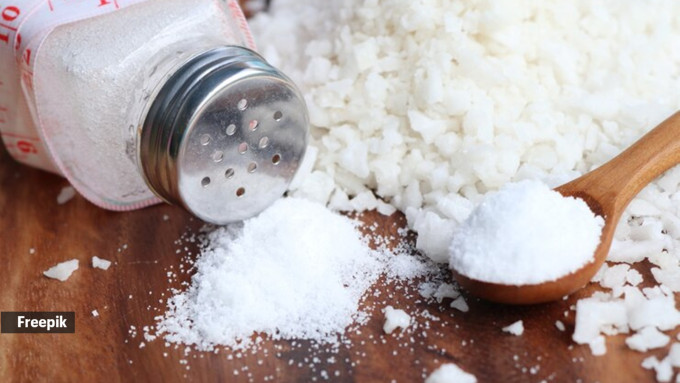Here’s how to spot microplastics in your food at home
Microplastics or tiny plastic particles less than 5 millimetres in size have become a growing concern due to their presence in various food products, including Indian salt and sugar brands, as found by a recent study. While these particles are too small to be detected by the naked eye, there are some methods you can use at home to check for their presence in your food.
For those concerned about long-term exposure, professional testing and consulting with healthcare professionals might be necessary, said Dr Narendra Singhla, Lead Consultant – Internal Medicine at the CK Birla Hospital, Delhi.

Here are some things he suggested doing at home to catch microplastics in your food:
1. Homemade Density Test
One simple method to detect microplastics in food is the homemade density test. To perform this test:
- Fill a clear glass a quarter full with a dense liquid like vegetable oil, corn syrup, or honey.
- Add a small amount of the food sample: salt, sugar, or even water or juice.
- Stir the mixture and observe the behaviour of the sample.
Microplastics may float to the top, form layers or clumps, or sink unevenly. If the sample mixes evenly without any unusual behavior, it is likely microplastics-free.
However, Dr Singhla added that this method is not foolproof and might miss some microplastics or be influenced by other particles present in the food.
 Microplastics, tiny plastic particles less than 5 millimetres in size, have become a growing concern due to their presence in various food products, including Indian salt and sugar brands, as found by a recent study. (File Photo)
Microplastics, tiny plastic particles less than 5 millimetres in size, have become a growing concern due to their presence in various food products, including Indian salt and sugar brands, as found by a recent study. (File Photo)
2. Using Coffee Filters
Another method to check for microplastics, particularly in liquids, is by using a coffee filter or a 0.1-micron filter, Dr Singhla said:
- Pour the liquid through the filter and examine the residue.
- Microplastics might appear as tiny particles that do not dissolve or look out of place.
This method is useful for checking water or other beverages, though it may not be effective for solid foods.
3. Shake Test
For salt or sugar, you can perform a simple shake test, Dr Singhla said:
- Shake the container of salt or sugar and pour some out onto a dark surface.
- Look closely to see if any unusual particles fall out that do not resemble the rest of the contents.
- If you notice tiny particles that seem out of place, it might indicate the presence of microplastics.
To minimise the risk of contamination, it is important to regularly clean and sanitise your kitchen utensils, especially after using them for raw meat, poultry, or seafood. These practices will help reduce the likelihood of ingesting microplastics from kitchen utensils or food preparation surfaces.
While these home methods can provide some indication of the presence of microplastics, they are not entirely reliable, Dr Singhla warned. For accurate detection, it is best to send food samples to a laboratory where advanced testing can be performed. This will provide a clear understanding of the levels of microplastics in your food and their potential impact on your health.
📣 For more lifestyle news, click here to join our WhatsApp Channel and also follow us on Instagram
Disclaimer: The copyright of this article belongs to the original author. Reposting this article is solely for the purpose of information dissemination and does not constitute any investment advice. If there is any infringement, please contact us immediately. We will make corrections or deletions as necessary. Thank you.

